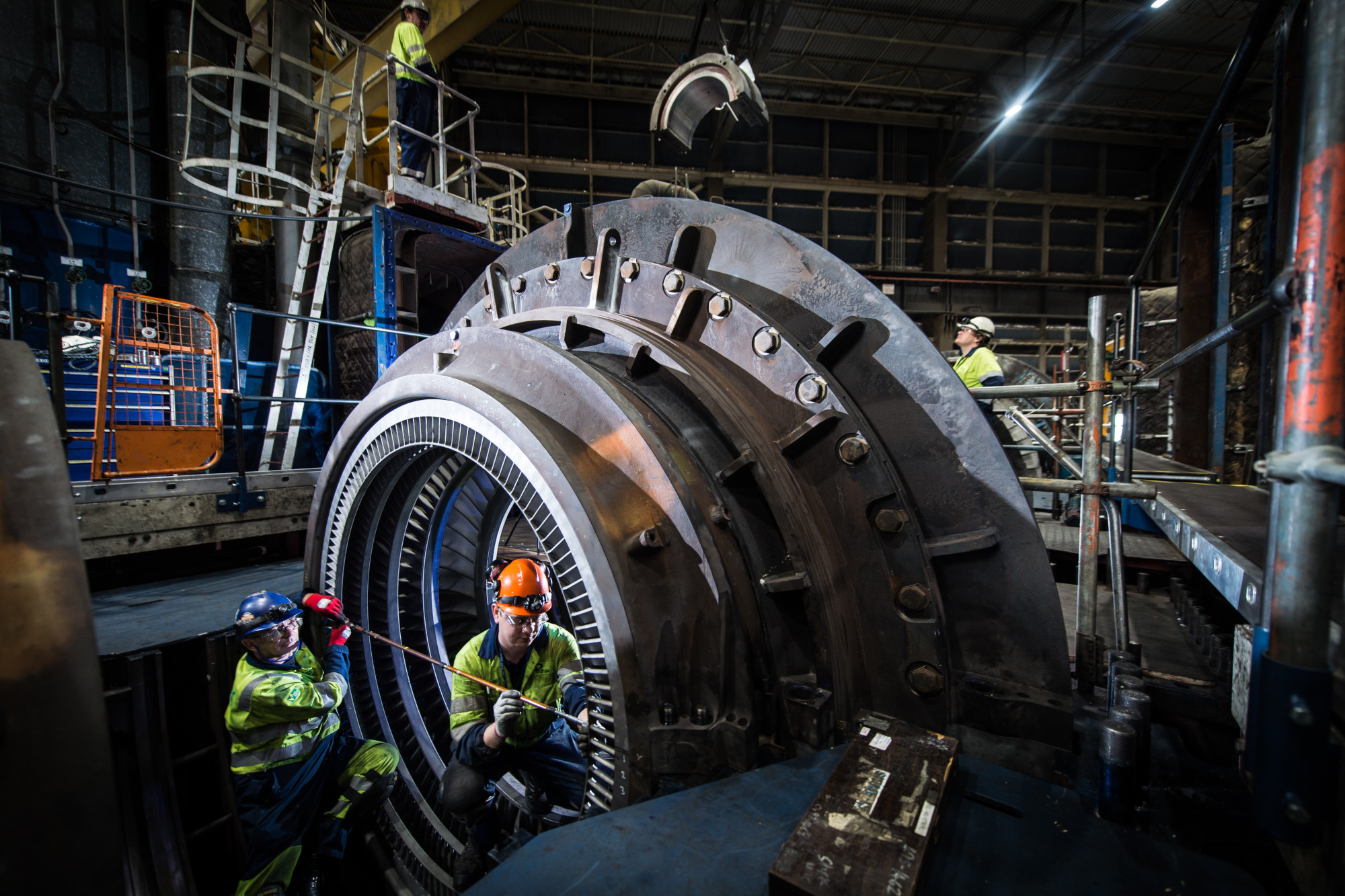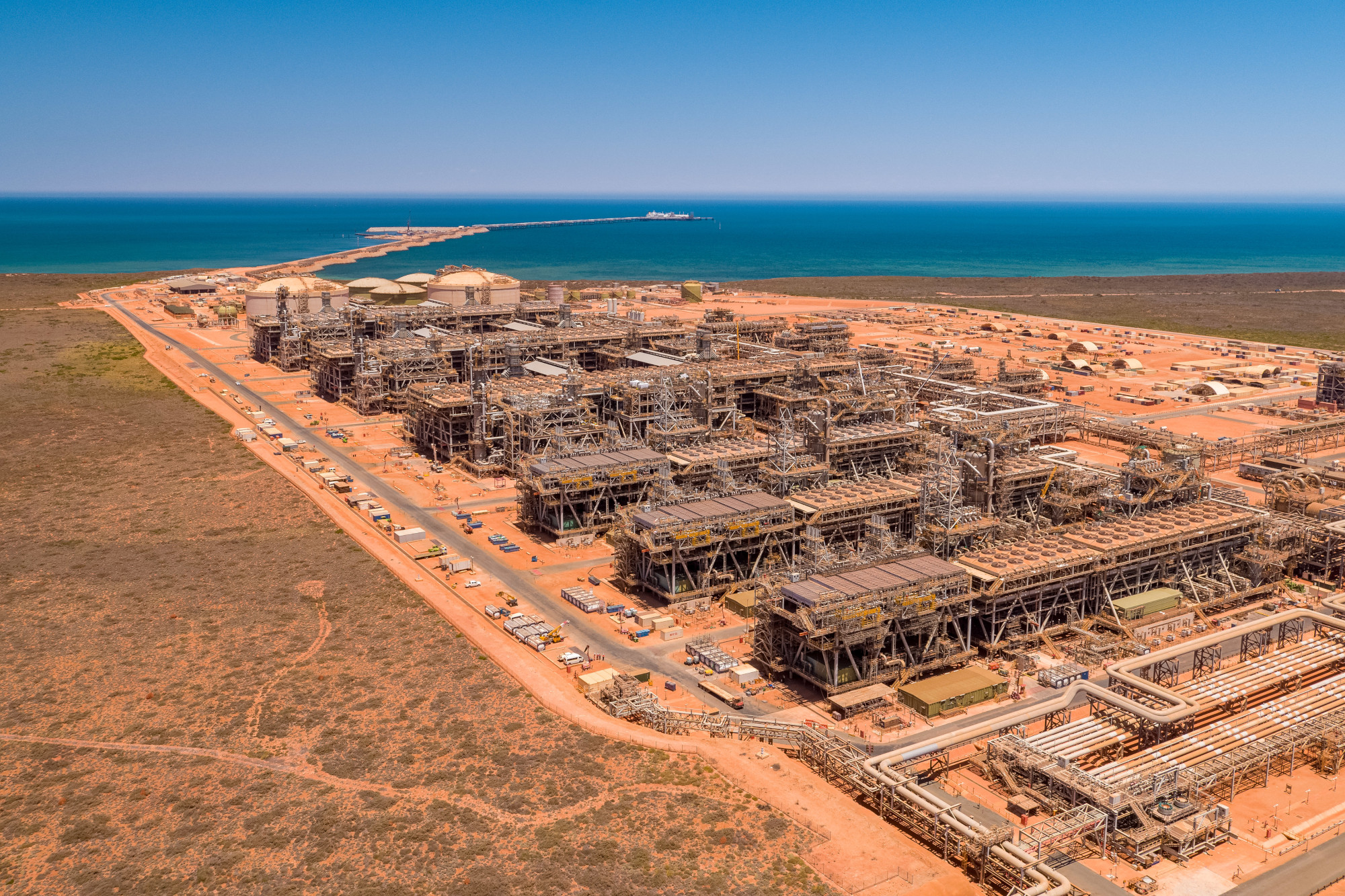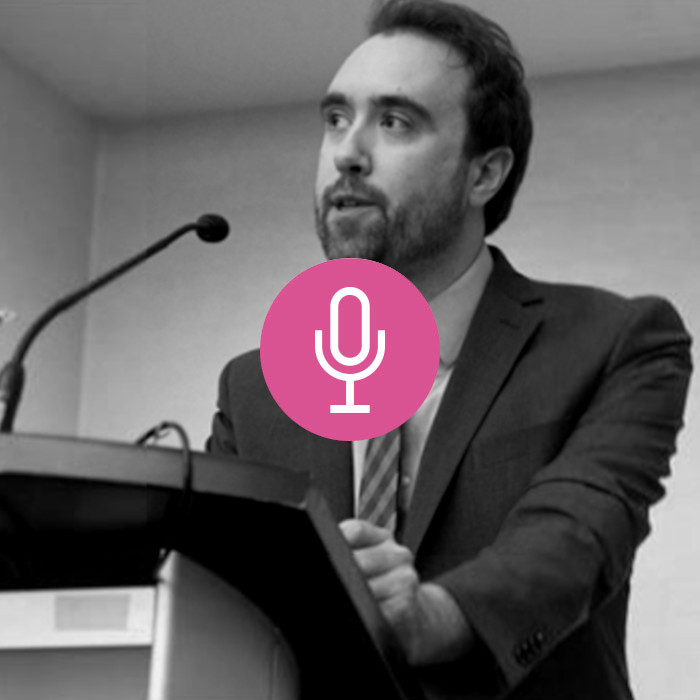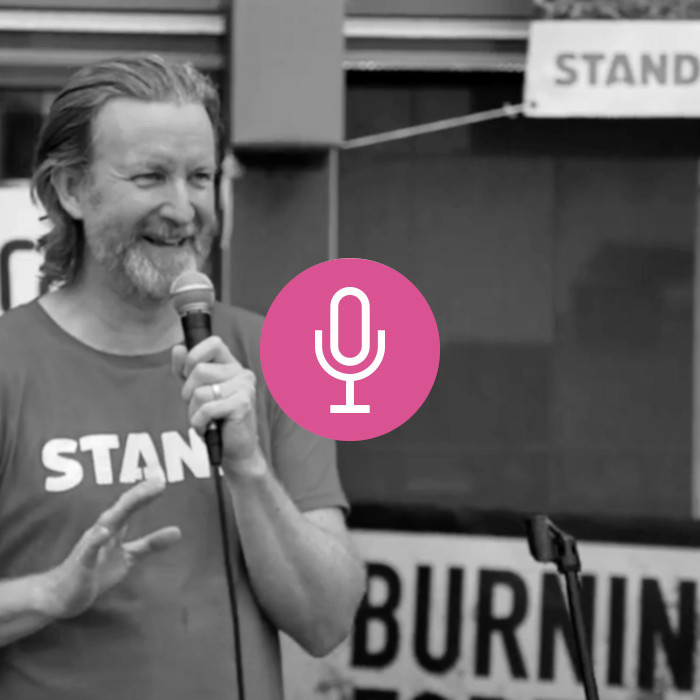Image: The Sleipner Gas field in Norway, the first offshore CCS facility in the world, which has been operative since 1996. Photo by Kjetil Alsvik. Copyright – Equinor.
This is the introductory article in a series about carbon capture and storage (CCS), explaining its current status around the world, and the hopes and concerns around its future for climate mitigation.
The second article, ‘Why CCS matters’, will cover discussions around hard to abate emissions, negative emissions, and the role of CCS in global climate models and net zero pathways. The third, ‘Capturing and storing problems’, will go into detail about potential technical issues and social concerns regarding CCS technology.
Read the second articleTable of Contents
Suck it up, polluters. Bury it.
That’s the basic principle behind Carbon Capture and Storage (CCS) technology: carbon dioxide is extracted from fumes in a smokestack or directly from the air, and then injected underground, or under the ocean.
If you follow climate news, or if companies target you online with adverts about how sustainable they are, you have probably seen the phrase ‘net zero’. Net zero is an approach to climate planning framed through accounting. It has become the norm for governments and corporations in the past decade. Instead of aiming to stop all of our greenhouse gas pollution, net zero says we can remove some carbon dioxide from the atmosphere too, to capture or offset any continuing emissions. In this future, humans’ net carbon emissions are zero, even though we are still emitting CO2 at a large scale.
CCS describes a group of technologies being pitched to do this. CO2 emissions that will be hard to eliminate this century – from sectors like cement, steel, aviation and farming – will be captured and stored, preventing them from further heating our atmosphere, if major climate models prove accurate.
CCS is an idea that scientists have been proposing since the 1980s, based on technology first patented in the 1930s, and first used commercially in the 1970s[1]. It’s been a key part of most international climate mitigation strategies and modelling for decades, and is a known concept for most folks working in the climate sector.
Yet few really have a clear idea of how much progress has been made with CCS, and there’s no expert consensus on its future. Depending on where you look for information, you can read that CCS is already successfully operational and has been for decades, or that it is a corporate, techno-futuristic solution to the climate crisis that has already been proven a failure.
Featured quotes: examples of the different opinions from experts in interviews for this series.
It’s hard to untangle these disagreements, or to find an overview that contextualises and simplifies them. As a result, there’s not much public understanding of CCS. A 2020 study found that 34% of US adults said they had never read, seen, or heard anything about carbon removal technologies before, and only 7% said they had read, seen or heard “a lot”.
When people do learn about CCS, “the first public reaction is usually negative”, according to a 2019 literature review. So not many people know what CCS is, and the few who do dislike it. Meanwhile, according to the Global CCS Institute, meeting International Energy Agency modelling for net-zero will require a trillion dollars of investment to pay for 2000 new facilities worldwide by 2050. A recent report found that 65% of executives working in hard-to-abate sectors see CCS as “critical” or “important” in reaching 2030 and 2050 emission goals.
This disparity between public mandate and political and corporate strategy is a problem: whether CCS becomes a success or a failure in the coming decades will have enormous ramifications. CCS advocates worry that a lack of public support is the biggest barrier to deploying CCS at large scale, and critics worry that the issue is not being scrutinised in the media or debated by policymakers. All the while, the closer to 2050 we get, the more urgency is given to CCS in net zero pathways.
This article series, through compiling key texts and discussion with various experts, is intended as an in-depth introduction to the topic: the risks, the rewards, and the reasons why.
The different forms of CCS tech
With various companies touting new CCS methods that have yet to be deployed, navigating the ever-growing sea of CCS jargon can be difficult. For those who want to try, the key terms and tech are explained in this section.
Is carbon dioxide removal the same as negative emissions?
Not exactly.
The CCS process has three main steps that can take different forms in different facilities: the gas separation, where and when the CO2 is captured, and the form of storage.
Separation is the process of removing CO2 from other gases, such as the flue gases in a fossil fuel power plant. The most common separation method uses liquid solvents, usually organic amines, which chemically bind with CO2 upon contact, ‘scrubbing’ it from the gas stream. The main downside to using amines is the cost and energy required for the process – but it has long been technically tried and tested by the oil and gas industry[1]. Other solvents are also beginning to be used, including artificial ones.
|
Approach |
What is it? |
Pros |
Cons |
|
Membranes |
A membrane is a porous, solid material that gases can pass through. Different gases permeate at different rates, allowing them to be separated. |
Membranes can be modular, or ‘plug and play’, a big advantage over solvents, which require more infrastructure. |
· Harder to achieve high capture rates and high CO2 purity, than using solvents. · Not yet as operational as solvents. |
|
Cryogenics |
This involves cooling gases to below their boiling points to condense them individually. |
· Could be ‘plug and play’. · Significantly, Cryogenics could capture and store other pollutant gases in addition to CO2. |
· The main issue with this is that CO2 will not form a liquid state in atmospheric pressures, so the gas has to be cooled to -78.5C. At this temperature, it forms a solid, dry ice. · Not yet as operational as solvents. |
The other carbon capture lingo to learn is post-combustion, pre-combustion, and oxy-combustion – which basically differentiate when and where the separation takes place.
Post-combustion | This is when the separation occurs in smokestack flue gas, usually after fossil fuels or biomass have been burned for power or energy. |
Pre-combustion | A more expensive process that involves gasifying fossil fuels or biomass, instead of burning them. This produces a synthetic gas which can then be refined into hydrogen and carbon dioxide in reaction with steam. Useful for industrial processes and gas refining, it is likely to become the CCS norm, as liquid natural gas has replaced coal as the most common CCS feedstock, and there are increasing uses for hydrogen. |
Oxy-combustion | Similar to post-combustion, but burns the fuel in pure oxygen instead of air. The oxygen is obtained through cryogenic air separation, similar to the cryogenic CCS process discussed above. Oxy-combustion simplifies the process, particularly through removing nitrogen from the gas stream, which means that the concentration of CO2 is higher, making capturing easier. Oxy-combustion is yet to be deployed commercially, and pilot projects have been problematic: Vattenfall closed their German facility because “its costs and the energy it requires make the technology unviable”. |
In terms of storage, there are only really two forms that are currently operational, which are very similar: geological storage, and enhanced oil recovery. These both involve finding large, underground reservoirs at least one kilometre underground – often as far as three kilometres. These can be on or offshore, but must contain porous rock such as sandstone, with an impermeable layer of caprock at the top, made of salt, shale, or clay.
The CO2 is injected in supercritical form, which means that it’s pressurised until it begins to take liquid density, despite still expanding to fill a container like a gas. When this is injected into underground reservoirs, it displaces either oil or water, and fills the porous rock. Dr. Tom Kettlety, Oxford University’s Net Zero Research Fellow in Geological Carbon Storage, said to imagine a wet sponge being squeezed, and then filled back up with another fluid.
Video: a Youtuber demonstrates supercritical CO2 being formed.
Companies are developing other forms of storage, such as mineralisation, or mineral carbonation, which involves reacting CO2 with ores such as basalt to form a permanent, solid, carbonate rock. The main need for this will likely be in locations with limited geological storage, such as India[1]. It is a more energy-intensive process than geological storage, and requires a lot of mining for ores. It is also much less studied and developed than geological storage.
To what extent is CCS operating already?
“The only business model that actually works for CCS on a straightforward commercial basis is enhanced oil recovery. And 20 of the operating CCS plants globally are doing exactly that. It's ridiculous!”
Whether or not other business models might work, Dr. Richard Hauxwell-Baldwin of MCS is right that enhanced oil recovery is currently dominating the CCS market. Out of the 27 commercially operational CCS projects worldwide, 21 inject carbon dioxide into oil reservoirs to force out petroleum[2]. More than half of these are in the US. The remaining six projects use geological storage, mostly offshore. 12 of the 27 projects are tied to natural gas plants, and all but three use fossil fuels as a feedstock.
Despite all of the different technologies that CCS can include, this is the dominant model for CCS today:
Natural gas is refined to produce hydrogen and carbon dioxide.
The CO2 is captured using an amine solvent and then injected into underground wells, extracting oil in the process.
The hydrogen can then be burned without further emissions.
It is unsurprising that this model is leading the pack: not much is new about it. CO2 flooding for enhanced oil recovery and CO2 capture using amine have both been used commercially since the 1970s, although not in combination[1]. Outside of the specific definitions of CCS, there are hundreds of enhanced oil recovery projects around the world, and by far, the most common form of enhancement is CO2 flooding[3]. The oil industry already purchases and injects millions of tons of CO2 every year[1].
Despite this, we should not overstate how well the oil recovery business model “works” for CCS: however tried and tested, oil recovery CCS projects have not always been commercially successful. SaskPower’s Boundary Dam project in Canada, for instance, cost 1.45 billion Canadian dollars, including a $240 million government grant, and runs at a loss. The economics of the project have been widely criticised by the media[4]. In 2015, internal documents from SaskPower revealed “serious design issues” in the carbon capture system, leading to frequent technical problems. The unit was only operational 40% of the time, and released around half of its captured CO2 back into the atmosphere even when it was. The project’s target earnings and capture capacity have both been decreased.
Video: an explainer of enhanced oil recovery, by Scottish Carbon Capture and Storage, a UK research group.
Beyond this, there is a question of whether enhanced oil recovery projects work in climate mitigation terms, even when they do work commercially: what is the point of spending large amounts of money and energy to store CO2, only to extract more fossil fuels to be burned?
Dr. Howard Herzog is a pioneer in the world of CCS research, part of the original team to study CCS in a climate context in MIT in the 1980s, where he has stayed ever since. In his book on CCS, he wrote that using “CO2 to help produce CO2-emitting oil will not solve the climate change problem”. He does believe that enhanced oil recovery has been an “important stepping-stone for the development and deployment of CCS.”
Enhanced oil recovery may be a stepping-stone, but it is one we are still standing on. The question now: when are we going to step off?
What is in the pipeline for CCS?
As well as the 27 commercially operational projects, there are 30 operational pilot CCS plants around the world today. 16 additional future pilots are planned, as well as 132 new commercial facilities[5].
Only 19 future enhanced oil recovery projects are on the horizon – the tide is shifting to geological storage, with over a hundred facilities planned. Novel storage options, such as mineralisation, still have catching up to do (“our experience level is low”, says Dr. Herzog), but are beginning to be tested. Carbfix have developed the first operational pilot facility for mineralisation in Hellisheiði, Iceland, and more are planned, but it is a slow process. The Icelandic project injects CO2, captured from a geothermal energy plant, into basalt formations – but it is predicted to take 23 years for the CO2 to mineralise.
Many companies are developing other variations of the CCS process; amine is no longer the only solvent being used to capture carbon dioxide, although it is the most common, and one facility in Illinois, USA is operational using a membrane instead of a solvent (see Table 1, above).
This all sounds positive, but is minimal if CCS is going to play a major role in climate mitigation. The Global CCS Institute reports that we should be building 75-100 plants per year if we are going to meet IEA modelling by 2050. Most of the 132 new facilities are still years away from being operational – as Dr. Hauxwell-Baldwin said, “given the long lead times for CCS projects, up to 10 years depending on location, it will be a while before this growth in early and advanced development translates into operating projects.”
We are at a crossroads. If CCS is going to play a significant role in keeping global heating to less than two degrees, we need to be planning many more facilities than we are currently: remember, 2000 facilities at $1 trillion to meet the Sustainable Development Scenario, and much more to meet some of the IPCCC pathways. Yet CCS has not yet earned enough confidence to inspire that kind of spending, or that much land use change – 2000 facilities is a lot of physical space to fill.
Has CCS been a success so far?
There are isolated success stories for CCS: the Sleipner project in Norway is the most well-known.
Now 25 years old, the natural gas plant in the North Sea had initial teething problems[6], but has been functioning well since 1997. Sleipner proved many aspects of CCS possible, including offshore geological storage, and accurate monitoring for CO2 leakage. It has stored roughly 0.9 million tons of carbon dioxide a year – just over two percent of the country’s emissions in recent years.
This level of success has not been the case for most CCS projects. A recent study in Energy Policy evaluated the success rate of 263 carbon capture, utilisation and storage projects undertaken between 1995 and 2018, and its findings were grim reading:
If “every CCUS project planned in the last 30 years was successfully delivered, the CO2 capture capacity in operation in 2019 would be 232 Mt CO2 per year, which is 10% of the target capacity for year 2030 of the Sustainable Development Scenario. However, we observe that 43% of announced CCUS projects were cancelled or put on hold… Moreover, of all large-scale pilot and demonstration plants, i.e., those with a project size greater than 0.3 Mt CO2 per year, 78% have been cancelled or put on hold.”
This is only talking about whether facilities have been closed. Even in the 22% of large projects that have continued, many have failed to capture or store as much CO2 as they had planned (capture rates will be discussed in the third article in this series). Enough CCS is in operation today to capture about 34 Mt of CO2 per year. This is less than 2% of what the IEA say we need by 2040 in its Sustainable Development Scenarios, or less than 1% of what some scholars say we need by 2030 to limit global heating to two degrees.
The authors report that there is “growing sentiment that learning is not enough” to justify investment in further pilot projects, and discuss the late deployment of CCS compared with political and industry expectations in the noughties. They blame this slow deployment on two factors. The first is a lack of private sector investment – something no one should be surprised by, seeing as CCS projects usually cost more money than they earn. The second is the failure of the majority of projects to date.
Interestingly, the authors still believe in CCS, and when reached for comment, said that they would be uncomfortable with this paper being used to criticise investment in CCS. One of them, Greg Nemet, said that “meeting the Paris climate goals and getting to net zero emissions will require many demonstration projects across a variety of technologies. As in other areas, we will be more successful if we learn from what has worked and what has not.”
Despite proving that 78% of large-scale projects have failed to date, they see a successful pathway for CCS. After identifying common features across failed facilities, they advocate small, quickly developed, publicly funded projects in future, which can then be upscaled incrementally, along with various “market-pull” schemes, to “urgently [restore] confidence among the public, investors, and other stakeholders by delivering successful projects.”
Could this work? Dr. Hauxwell-Baldwin is sceptical – he says in his experience with government, “they like big stuff. You know, show me the big stuff, what can we do that’s big. As we start talking about decentralised small scale, it doesn’t aggregate in the same way.”
None of the CCS experts interviewed for this series said they felt optimistic about CCS’s future, despite most saying it was necessary to meet net zero targets. Dr. Herzog said he was “optimistic technically, but policy wise, also political wise, public acceptance wise…there’s all of these things. If we really get serious about getting to net zero, make it a high priority, I would be very optimistic. But, you know, we’re not. We’re nowhere near that point.”
Keep reading: find the second article in this series, about CCS & climate modelling, here.
Endnotes
[1] One of the main sources for this series is Dr. Herzog’s 2018 book, Carbon Capture, published by MIT Press.
[2] Dr. Hauxwell-Baldwin is not wrong to say that 20 projects, rather than 21, use Enhanced Oil Recovery (EOR): SaskPower’s Boundary Dam project in Canada is not always counted as it does involve some geological storage without oil recovery. Yet its primary purpose remains to sell CO2 for EOR.
[3] This is according to the IEA’S WEO 2018 EOR database.
[4] Examples: ‘Carbon capture faces viability struggle‘, The Financial Times, 2014; ‘Nice try, shame about the price‘, The Economist, 2014; ‘A Coal Plant That Buries Its Greenhouse Gases‘, MIT Technology Review, 2014; ‘Corralling Carbon Before It Belches From Stack‘, The New York Times, 2014; ‘Companies Struggle to Make Carbon Capture Viable‘, The New York Times, 2015.
[5] A lot of the data in this article is sourced from GCCSI / CO2RE’s database of CCS projects.
[6] Sleipner had issues in its first year with sand influx – sand being created from the sandstone in the reservoir as a result of the injection process. This can cause various issues, including erosion of the injection infrastructure. Sleipner resolved the issues by adding sandscreens and gravel into the injection well – but sand has been a problem for other CCS projects since, such as the Gorgon facility in Australia.
Bertie Harrison-Broninski is an Assistant Editor at ELCI, and a researcher studying bioenergy and BECCS policy for Culmer Raphael. He is also a freelance investigative journalist, with recent work including Al Jazeera’s Degrees of Abuse series and John Sweeney’s upcoming book on Ghislaine Maxwell. Find him on twitter @bertrandhb.





